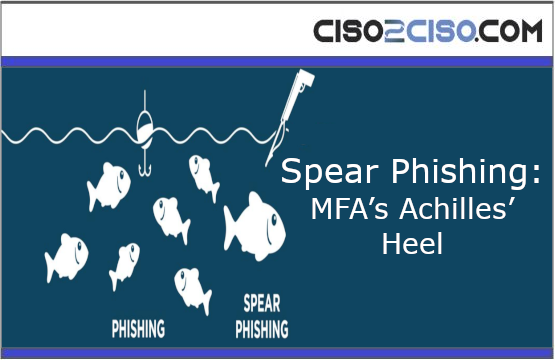Abstract:
Multifactor Authentication (MFA) or Second Factor Authentication (2FA) has been regarded as a strong security measure for protecting sensitive information and systems. However, this research paper shows a significant way to evade MFA through spear phishing attack used by the modern and advanced attackers to not only to infiltrate into the email accounts but to ex-filtrate the organization’s critical data or to deploy malwares or specifically the ransomwares, etc. and educate the audience to protect the advance phishing attacks.
Introduction:
Multi-factor authentication is proven to be a powerful security measure to counter the rapidly increasing attacks against the traditional authentication methods such as single factor authentication. These old-school password-based authentication are susceptible to various attacks such as brute-force, SQL injection, confusion attacks, etc. and hence attacker’s leverage these ways to compromise the end-user accounts to perform malicious activities.
MFA complements user’s identification by adding an extra layer of security by requiring the end users to provide the evidence of their identity by incorporating additional factors along with username and password. such as biometric data (fingerprint, facial recognition), hardware tokens, SMS codes, or push notifications. Now let’s discuss in below section some of the basics of authentication with regards to MFA.
Authentication:
Authentication is the process for verifying the user’s identity to establish the trust and ensure that only the authorized users are granted the access to the requested resources or information. Authentication plays a vital role in protecting the sensitive information, securing the individual and organization’s accounts, systems, and networks. Authentication is being setup for the users to ensure the complete privacy of the information and protection against the leaking of confidential data.
The authentication protocol is employed in almost all the digital domains such as banking, ecommerce, email services, social media platforms, corporate environment, and government systems. Therefore, a proper authentication protocol should be setup properly because a misconfigured authentications can lead to breach of confidentiality, integrity, and unavailability of the digital resources. In addition to the above secure configurations, it is also very important to educate the end-users against the modern phishing attacks to safeguard their digital resources and accounts. Now, let’s look at the below pictorial graphical representation of authentication to resource acces-
Identity:
Identity refers to the unique characteristics or attributes in both digital and physical world to identity the individual entity from others. In physical world the attributes to identify any user is via name, age, sex, nationality or National ID. However, in digital world username (generally some ID, or email address) and password refer as credentials to identify the end-user who is requesting the access to required digital resources.
Multi-factor token authentication:
MFA is also known as the access control token, which is associated uniquely with the user’s account, which the user upon entering the correct credentials along with the requested access control token, then the server upon verifying the whole HTTP/s request grants a session token to the user in form of Cookies which are stored at the user or the client end.
There are multiple authenticator access control apps available in the market such as Google uthenticator, Microsoft Authenticator, etc. these authenticator apps scan user’s identity in form of a digital barcode that stores the user’s information. Once the Authenticator apps verifies the user’s information and then grants the user an access token that keeps in active state generally for 60 secs.
Views: 0




















































